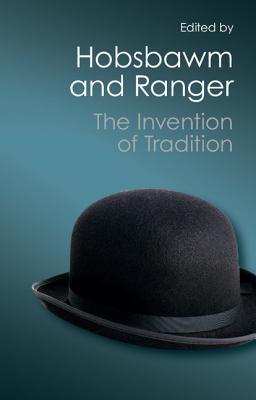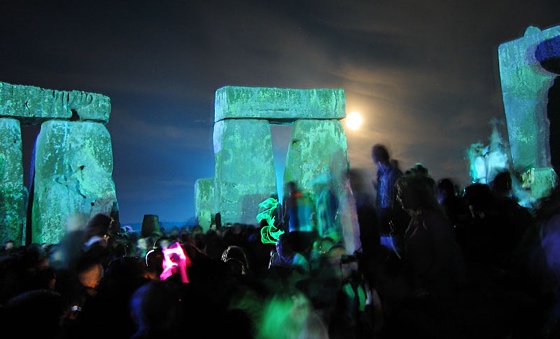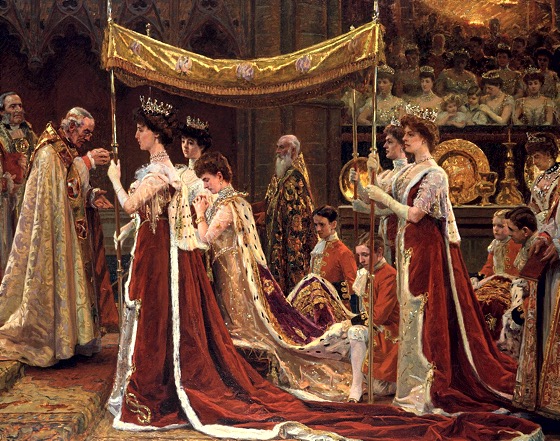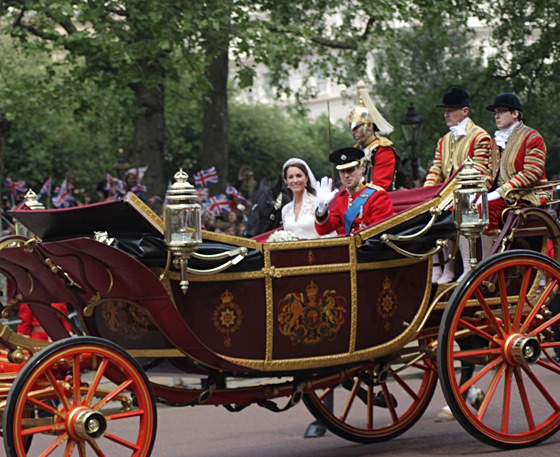
Most new ideas are wrong. Most new ways of doing things don’t work. Rationality and science can help sort helpful innovations from harmful or useless ones. However, for nearly all the time humans evolved, those were unavailable.
For our ancestors, it was nearly always a good idea to reject any cultural change. Even now, “we have always done it that way” is often a good reason to continue.1 For this reason, our brains tend to conservatism.
For innovators, the popular preference for tradition is an obstacle. A common, effective strategy is to give the impression that the innovation is not new, but traditional. That hides its risks, costs, or defects, and makes it seem comfortingly safe and acceptable. Historians call this ploy “the invention of tradition,” a phrase introduced in an excellent book by that name.
Of course, every tradition was once an invention. That is not “invention of tradition.” “Invention” here means deliberate deception. It is the presentation of something new as though it were ancient. This may involve explicit falsification of history, or just misleading association of the innovation with symbols of tradition.
Genuine, dramatic progress is also attractive, but hard to come by. Advocates of ideas or practices that have long been marginal—because they don’t actually work well—can dress them up as visionary breakthroughs that will revolutionize everything. For a while, this may bring popular attention and acceptance. This is the mirror image of an invented tradition.
So far as I know, historians haven’t discussed this ploy, and there is no standard term for it.2 So, provisionally, I’m calling these “timeworn futures.”
I’ll discuss some entertaining examples of invented traditions and timeworn futures later in this page. (Including horse-drawn carriages, kilts, and cranberry sauce.) But first: how is this relevant to Meaningness?
Legitimizing systems

Given the serious defects of the systematic mode of understanding meaningness, it is remarkable how successful it was, for how long.
Invented traditions and timeworn futures were key strategies for overcoming psychological resistance to systematicity. For example, the radical new Protestant doctrines were “traditional Christianity, as practiced by the Early Church” (in contrast to the supposed illegitimate innovations of Catholicism). The radical new ethical demands of modern life were “traditional morality.” The radically new bureaucratic state was “the glorious tradition of our nation.” All these descriptions tried to make systematic mode innovations feel choiceless.
Simultaneously, each splinter Protestant sect had a fabulous “new vision” for Godly society; outmoded ethical claims were “spreading rapidly from decent modern people to benighted foreigners and our own lower classes”; and archaic state institutions were “essential foundations for national progress.”
Even after the systematic worldview has collapsed overall, falsifications of both types are still frequently used to justify particular systems.
Invented traditions and timeworn futures are harmful when they justify systems that are worse than alternatives. Arguably, they are benign if they justify systems that are better than alternatives, but which may be rejected for bad reasons. Even then, the deception is dubious.
The countercultures, fabricating pasts and futures

Image courtesy Andrew Dunn
As the mainstream collapsed, the 1960s–80s countercultures proposed alternative systems. These soon failed, unsurprisingly, because they didn’t have much new to offer.
Both countercultures relied heavily on invented traditions and timeworn futures. However, the dualist counterculture relied particularly heavily on invented traditions, and the monist one on timeworn futures.
The dualist counterculture advocated “restoring traditional American values,” but the glorious past it extolled had never existed. If the movement had succeeded, it would have created a future unlike anything in history. The monist counterculture proclaimed the “Dawning of the Age of Aquarius,” but this timeworn future was straight out of early–1800s German Romantic Idealism.
Each counterculture used the other strategy as well, though. Reagan proclaimed “morning in America.” The New Age justified epic silliness with invented roots in Ancient Egypt, Atlantis, Native American wisdom, Eastern Religions, Mayan prophesies, or just about any time, place, and culture other than 1800s Europe—because Romantic Idealism was thoroughly discredited.
Buddhism: 2000 years of invented traditions
Reading the history of Buddhism, I gradually realized most of its heroes and events were make-believe. Rin’dzin Pamo recognized The Invention of Tradition would explain the motivations of the inventors, and gave me a copy. A couple years later, I discovered David L. McMahan’s book The Making of Buddhist Modernism, about the invention of “Buddhism” in the late 1800s and early 1900s. I’ve written many blog posts about that.
Meanwhile, the Buddhism invented in the 1970s as a synthesis of vintage–1900 Asian modernist Buddhism with the American monist counterculture is still presented as a cutting-edge new path. Since the weakness and defects of that system have been clear for twenty years, this is a fine example of a timeworn future.
How to defend against ideological time-distortions
The only defense against invented traditions and timeworn futures is to study the history of ideas.
This book is partly an attempt to catalog the building-blocks of meaning and help you recognize them. There are surprisingly few genuinely different ideas about meaningness. Timeworn futures just repackage a few, wrapped in shiny up-to-date branding. Invented traditions try to hide something new amidst the familiar, wrapped in reassuringly retro branding.
The final chapter of The Invention of Tradition is titled “Mass-producing Traditions: 1870–1914.” That, plus discovering that Buddhism-as-we-know-it was invented then, made me realize how much of contemporary ideology dates from the period. The era achieved a brilliant, seemingly harmonious synthesis of Protestantism, scientific rationalism, nationalism, industrial capitalism, and Romantic expressivism. It took extraordinary ideological innovations to paper-over contradictions among these—including extensive time-distortions.
I had neglected Victorian ideology as irrelevant: stiff and dull and forgotten by all. But, the story of meaningness since then is mainly just an account of that architecture disintegrating. To make sense of the wreckage we live among, we have to look at historical images of the palace at its peak.
Forthright mythologization in the fluid mode
It is almost impossible to imagine alternatives to one’s own culture from within. You need to expose yourself to a source of contradiction; of otherness. With the world tending to a global monoculture, pasts are among the few resources we have for innovating futures.
Pasts also have great romantic and aesthetic appeal, so they are effective for communicating and inspiring futures. That is one reason invented traditions work. It is the duplicity of invented traditions that is the main problem, not their creation as such.
I will suggest that non-deceptive creative mythologization, based on an archaeology of meaningness, may be a valuable method in the fluid mode. Myths are sacred fictions we tell about the past to make sense of meaningness in the present, and to point toward futures we hope for (or hope to avoid). Now that we no longer live in the systematic mode, we have no reason to pretend that the myths we make are “true.” We have no compulsion to tell stories that are entirely coherent and well-founded—because we’ve learned that is impossible.
My romantic fantasy novel, set in India in 700, tries to create an inspiring mythology. It mixes genuine history, contemporary values, and—implicitly—ideas about a future I would like to see.
British royal ritual: an invented history, with motivations

The Invention of Tradition analyzes many examples, which are fascinating and often funny. Most in the book concern the falsification of the traditions of the British kingdoms for nationalist purposes. I’ll describe one of these in some depth, and then a variety of other invented traditions briefly.
The picture above is from the Coronation of King Edward and Queen Alexandra, apparently around the year 1275. The style is Pre-Raphaelite, a genre of painting from the mid–1800s that emphasized Romantic fantasy themes. Pre-Raphaelite paintings usually feature gorgeous noblewomen in long flowing pseudo-Medieval robes, gothic architecture, and a wizard or king plus maybe a dragon.3
Britain is, of course, famous for its royal pomp and circumstance; no country does elaborate state occasions better. That is due to its unbroken tradition of royal ritual, going back to Medieval times, as in the picture above.
Not. The Coronation of King Edward VII and Queen Alexandra was held in 1902. The “tradition” of British royal ritual had mostly been invented over the previous fifteen years, and the Coronation was mainly new. It was, however, elaborately fake-Medieval. It looked like a Pre-Raphaelite painting—a fantasy of Medieval royal life—because it was imitating a Pre-Raphaelite fantasy.
(The central figure in the background appears to be Merlin, although I suppose he was actually some sort of Anglican Church functionary. Sadly, dragons were already extinct in Britain, so they were not invited.)
Of course, Britain had had genuine royal ritual, presumably for as long as it had had royalty. The point of a coronation ceremony is to get together everyone important to publicly agree that the new king is legitimate and unopposed. This is important because new kings are always opposed, and often illegitimate (relative to whatever standard of legitimacy is current). A successful coronation demonstrates that the king has enough power to force everyone to pretend, at least. It sows distrust among the opposition (who have all seen each other giving fealty to the king—so who is to say where anyone’s real loyalty lies?). It also affirms the mutual dependence of the Church and crown, and God’s mandate for rule. If well-executed, coronation works psychological magic (as ritual does), inspiring awe, loyalty, and gratitude in the kingdom’s subjects.
However, for several centuries, Parliament had gradually increased its powers at the expense of kings, with the balance shifting by the late 1600s. Moreover, the British kings from then up to Queen Victoria, who was crowned in 1837, were uniformly defective and unpopular, yet still able to interfere strongly in government.
When Victoria came to the throne, at the age of 18, she was already popular, and a potential threat to Parliamentary power. Parliament therefore engineered a minimal coronation that was both low-key and probably deliberately “shambolic” (as it is often described). This was perhaps the low point of British royal ritual. Nevertheless, Victoria and her husband Prince Albert were popular constitutional monarchs, and exerted considerable political power behind the scenes.
In 1887, Parliament reinvented royal ritual for Victoria’s Golden Jubilee, notionally a celebration of her fiftieth year on the throne. This was royal ritual with an entirely new function. It was not, in reality, to confirm the legitimacy of the Queen. Rather, the Jubilee confirmed the legitimacy of the new British establishment: Parliament itself, the Anglican Church, industrial capitalism, and the colonial Empire.
The new establishment’s legitimacy was indeed in question, threatened not by the throne, but by even newer forces. At home, populist movements, including socialism, were rapidly gaining support. Abroad, the moral basis for the Empire, and its political and military feasibility, were increasingly dubious.
The Golden Jubilee, and even more the Diamond Jubilee of 1897, were enormous pageants of made-up ceremony, designed to give the impression that the new British establishment was continuous with ancient tradition. Now the aged, ailing, widowed, withdrawn, depressed and drug-addled Queen could be used as a symbol of that continuity, with no risk of any actual continuity of the throne as a power base. Populists were often republican, in favor of abolishing the royalty and House of Lords. So, the Jubilees were meant to create new popularity for the Queen, and by extension the Lords and the rest of the establishment that she notionally headed. They were highly successful.
The Jubilees were not just—or even mainly—British affairs. The Diamond Jubilee was a lavish “Festival of the British Empire” designed by the Colonial Secretary. Parliament had declared Victoria Empress of India, a newly-invented title, in 1876. That was the pretext for making the Jubilee into a ceremony in which all the colonies gave homage to, in effect, their actual rulers—the British establishment. Ritual festivities were held not only in Britain itself, but throughout the Empire.
Victoria died in 1902, and was succeeded by her son Edward VII—whose Coronation with his wife Queen Alexandra is depicted at the head of this section.4 That grand event was modeled on the Jubilees. Its fake Medievalism suggested eternal stability of British institutions at a time when, in reality, they were changing rapidly.
British royal ritual is now a genuine tradition, having endured for a little more than a century. Here’s a scene from the 2011 wedding of Prince William and Kate Middleton, featuring the carriage made for Edward VII’s 1902 Coronation.

That carriage was an invented tradition in 1902; the aristocracy had already abandoned carriages for motorcars, so new ones had to be built for the occasion. Pseudo-Medieval carriages are an authentic tradition now. The most recent one features electric windows, heating, hydraulic stabilizers, and built-in digital copies of important British historical documents. Just in case you need to check the Magna Carta, while being dragged along by six horses, to see how your royal powers are constitutionally limited.
In fact, I suspect that the over-the-top Romantic Medievalism of the 1902 Coronation was partly to underline that the royalty were an absurd archaism, retained only for symbolic value—lest the new king get any ideas.
Tartan and kilt

A chapter of The Invention of Tradition concerns the invention of Scottish history, culture, and nationality. It was expanded into a a full book, summarized here. Two striking facts concern the invention of the kilt, and of clan tartans, by English businessmen.
Tartan and kilt, those universal badges of Scottishness, are about as authentic as Disneyland. The kilt was invented by an Englishman, Thomas Rawlinson, who came to Scotland in the 1720s to manage an ironworks in the Highlands. Rawlinson observed that while the actual native costume of the Highlanders—a long belted cloak—might have been suitable for rambling over hills and bogs, it was “a cumbrous, inconvenient habit” for men working at a furnace. So he hired the tailor of the local army regiment to make something more “handy and convenient for his workmen” by separating the skirt from the rest and converting into a distinct garment.
Clan tartans were invented in the early 1800s by an English textile manufacturer, William Wilson, as a way of expanding the market for his products. Tartans were already common in Scotland, but variations in pattern were regional. It appears to have been Wilson who had the idea that each clan should have its own pattern.
Royal decree imposed unique tartans on the clans in 1822, when George IV visited Scotland. Sir Walter Scott staged elaborate state pageantry for the king. He invented numerous ancient national traditions for the occasion, deliberately creating the first unified Scottish national identity.
Meanwhile, in America
Thanksgiving is an entirely invented tradition. Its mythology has accreted gradually, but mainly dates to the late 1800s and the first half of the 1900s. One aspect I find particularly amusing:
It has been an unchallengeable American doctrine that cranberry sauce, a pink goo with overtones of sugared tomatoes, is a delectable necessity of the Thanksgiving board and that turkey is inedible without it.
—Alistair Cooke
This is, of course, because it was served at the First Thanksgiving in 1621. No one actually likes the stuff. (We know this, despite claims to the contrary, because no one eats it except at Thanksgiving.5) However, it’s traditional, so one has to pretend.
But actually, there’s no evidence that it was served in 1621. And, the “tradition” was unknown until the 1940s, when it was invented by Ocean Spray, the marketing arm of the cranberry industry. An advertising campaign showed “traditional” Thanksgiving dinners, prominently featuring cranberry sauce. That dramatically increased demand for an agricultural product that is nearly inedible—intensely sour, bitter, fibrous, and otherwise almost tasteless.
And then there’s Christmas.

“An ‘American tradition’ is anything that happened to a Baby Boomer twice”—xkcd
- 1.Some readers will balk at this, because it is often also used to justify the unjustifiable. I find Chesterton’s parable of the fence helpful as insight into why maintaining traditions is useful as a default.
- 2.If you know of a discussion in the academic literature, or an accepted term, I’d love to hear about it.
- 3.They are ridiculous but I love them.
- 4.The king doesn’t appear in the picture. It shows the anointing of the queen. “Anointing” means that a shamanic medicine-man smeared sacred gloop on her. Quite what magic that was meant to accomplish, it’s hard to guess. We know, though, that seemingly-senseless rituals of supposedly “primitive” peoples—whether contemporary hunter-gatherers or ancient tribes such as the Victorians—express profound ineffable wisdom, due to their connectedness to the cycles of Nature and openness to the mysteries of Being.
- 5.My spouse claims to like it, and to have eaten it once outside of Thanksgiving. And they are not even American. So, “hardly anyone.”
